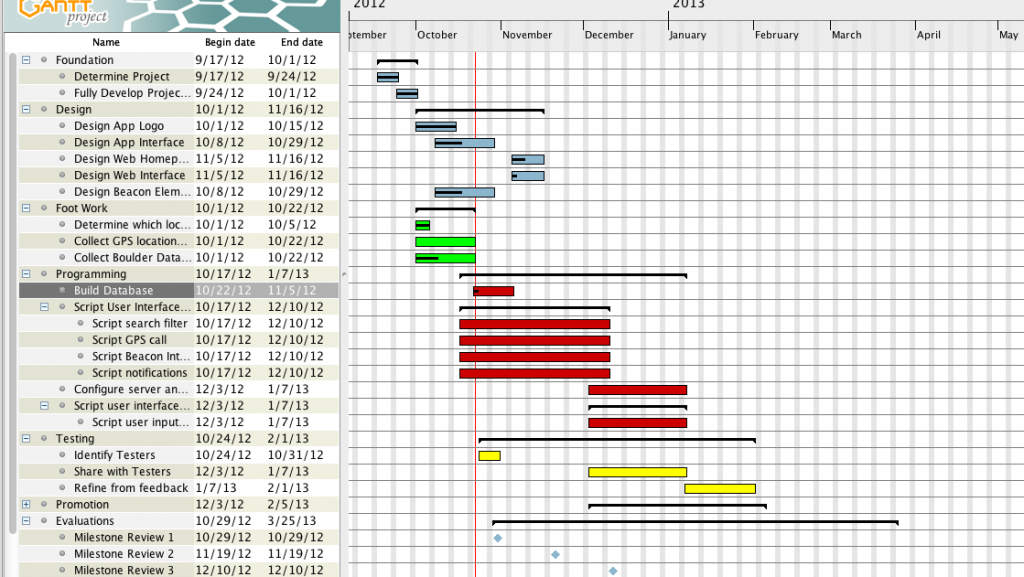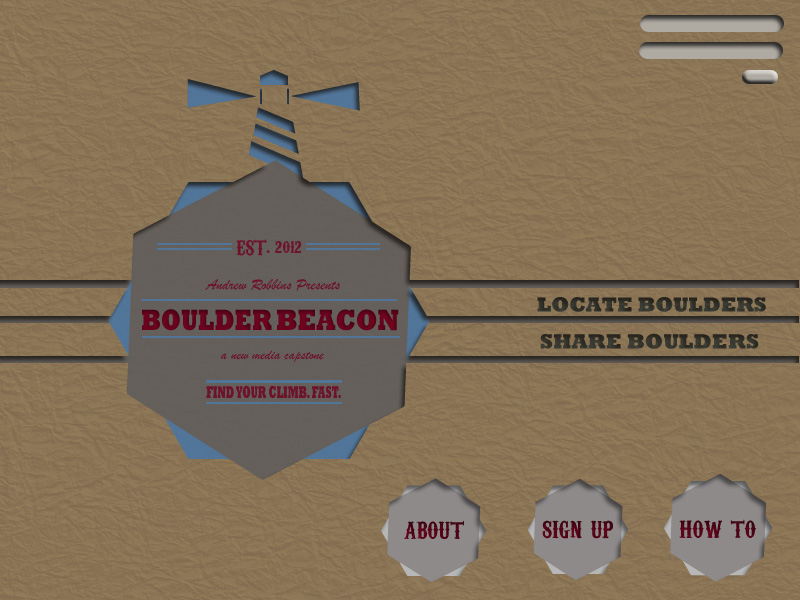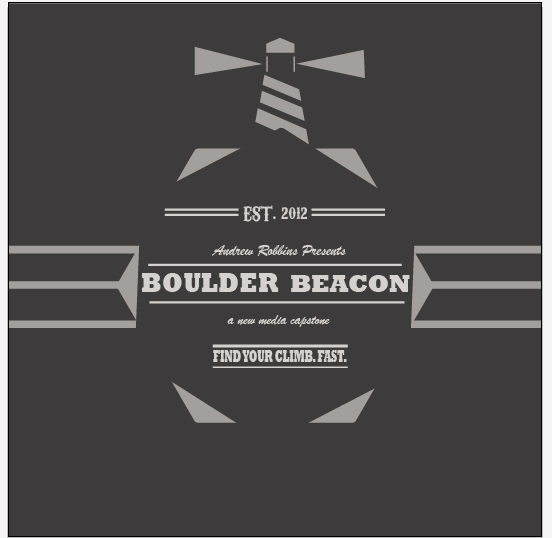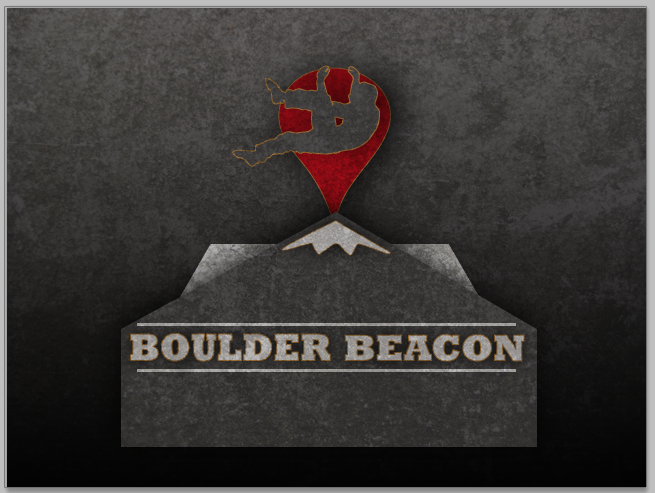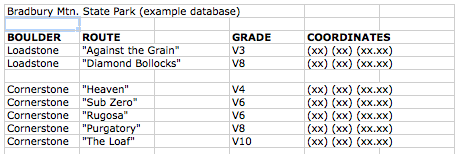This post is to exemplify an enhanced version of the capstone proposal. The post includes a few visual approaches to shed a more specific light on my intentions with this project. The approaches include some basic visuals such a some name ideas, a couple rough identity sketches and a rough wire frame of the apps functionality. This post also includes a promotional plan as well as an annotated bibliography of various companies and designers that are working on similar and related projects.
Approaches:
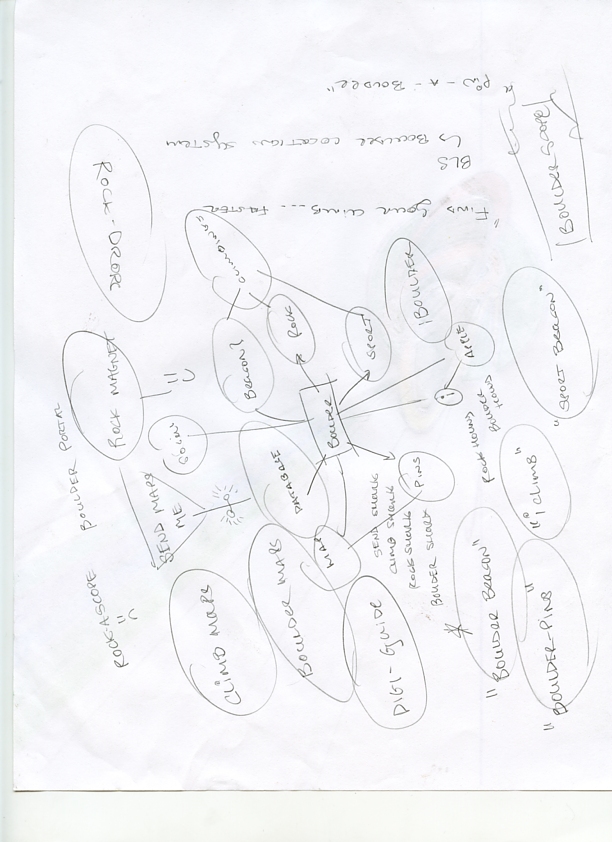
Brainstorm bubbles working on concepts and naming project.
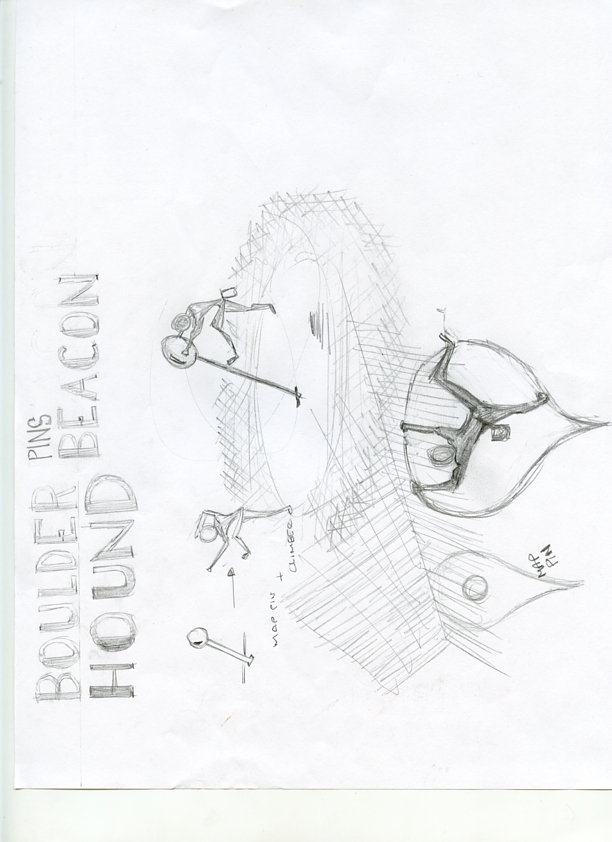
Rough sketches on logo ideas and some possible names.
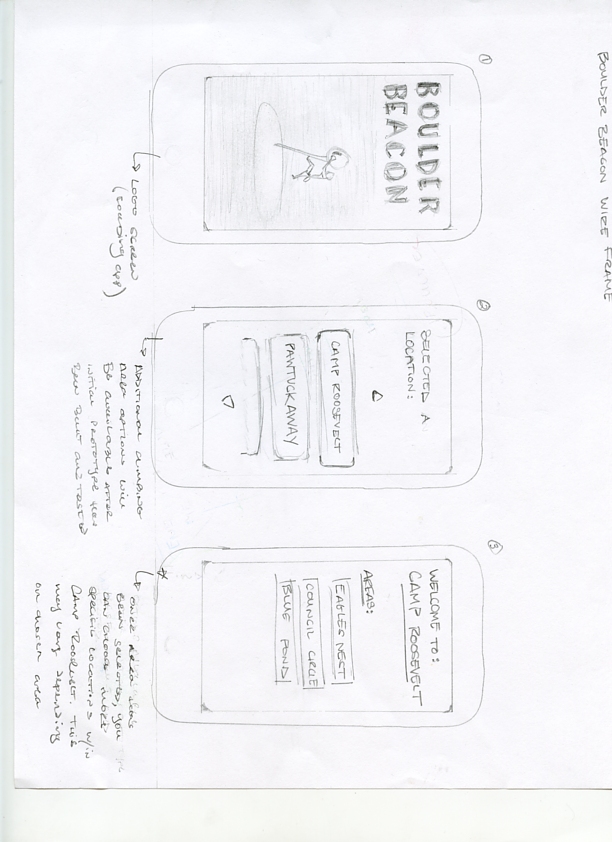
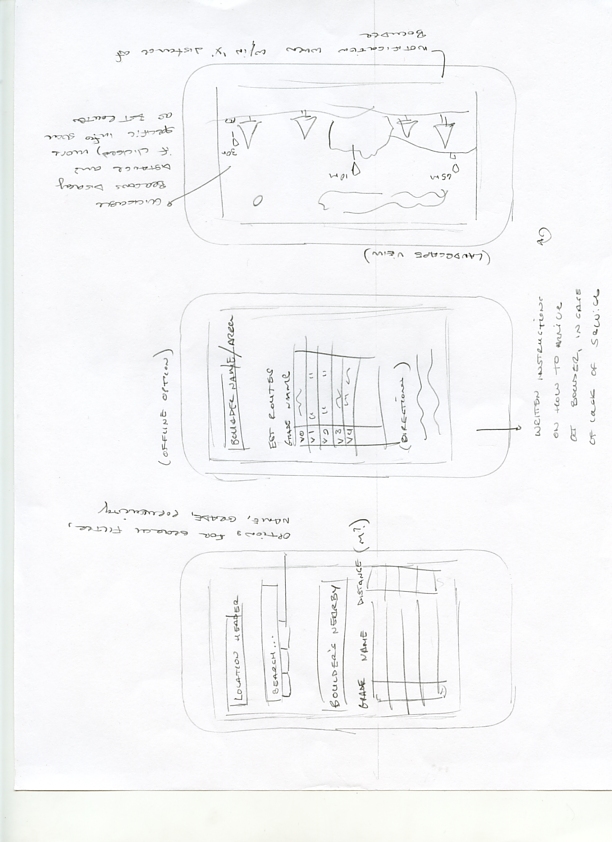
Rough wire frame sketches of app interface.
Promotion:
In planning the promotion of my capstone it is interesting because I feel like I am advertising to a very specific audience as that the rock climbing community is not all that large to begin with. After reading the posted link in the syllabus, I feel like I have some good ideas to run with. The obvious as well as necessary first option is the website. I want to have a website that can promote the app and offer any information. Also, the website can act as a service for user submitted geo-locations and offer any later updates for the app. In addition to the website, I think that an effective strategy would be to make some sort of video documentary to post to vimeo that can be a visual simulation as well as provide hype and get free advertising. The video could be seen as a commercial as well. I was thinking I might go with some scene where one climber struggles with a bunch of gear and trying to decipher a guidebook map while another climber uses the app with ease. On the other hand it would be cool to just make a short video with some footage of people using the app in some environment and some possible interviews. Another of the strategies from the reading that I plan on using is designing interesting graphic posters advertising the app. I think that if these were place in the right locations (Chadbourne to get the New Media crew and MaineBound to gather the rock climbing crew) and any obvious high traffic spots could produce great results. These posters could be used to promote both the app itself as well as the release party, which is another promotion strategy that I will explain later. Along the same lines as a strong graphic poster, branding was mentioned in the reading. I think that a well thought out and strongly designed brand that looks professional and makes sense is kin to making the right first impression when meeting someone for the first time. I plan to offer sketches and look forward to feedback as so that I can design the best possible identity. Another idea that I though would be a effective promotional strategy would be a release party, but with a spin. Instead of a party at a venue, I will invite people to come test the app at Camp Roosevelt. Anyone who would want to join could after downloading the app for free. I feel like this is a smart and fun way to launch the app in the environment it was designed for.
Annotated Bibliography:
http://www.makeuseof.com/tag/9-iphone-gps-apps-case-lost/
This site lists a few very popular GPS centered iPhone applications. I posted this link because of the app mentioned in the article, ‘Free GPS’. I think that this is useful because it shows two things, one being that people are obviously interested in being able to work with their GPS locations in fun and interactive ways. Also, this could be useful in the development of my own app both in modeling design as well as the fact that it is free and can be used to gather my own coordinates for the boulders.
http://itunes.apple.com/gb/app/aroundme/id290051590?mt=8
This site is for an app called ‘Around Me’. This is very important because I would really like to emulate what they have created in some ways. The app has a feature in which you can easily search for almost anything (restaurants, bars, taxis, movies ect.) and then by turning the phone into landscape mode they make use of augmented reality as you can look down a street and gather various informations on the surrounding adresses.
http://www.futuretap.com/home/whereto-en/
Along the same lines as ‘Around Me’. This is another example of location based application design. It is important to recognize the convergence of our technology and the real world. We are now finding ways to be connected to both simultaneously sharing real world experience whilst having the technologic advantages of mobile based application design.
Why Location-Based Services Will Create Multiple Winners At The Application Layer
A very interesting article talking about the progression of location based services are becoming so popular and why designers must take this type of information into consideration while developing for entertainment and service applications.
http://blogfreakz.com/tutorial/how-to-create-html5-location-based-application/
A somewhat random blog post that I came upon. Offers some interesting information regarding writing in HTML5 and building out location based information and collection. This could be a possible avenue for me to take in learning how to write for iOS and where I should get started.
http://www.socialmediaexaminer.com/location-based-marketing-tips/
A neat blog that offers tips and information on social media issues. This particular article details 26 tips for success in developing location based applications. While there are some irrelevant tips pertaining to making profits many of the tips I found to be useful and even insightful.
http://lt11.com/
This is a media production firm with a focus on the climbing community. I really enjoy their work and gather some inspiration from them. Also, I think that promoting this project through some sort of short documentary could be very successful.
http://www.mountainproject.com/
This is a similar service to my project. The website and mobile application allow members to sign in and research information about climbing areas. A lot of the information is user submitted which I think is the long term goal of my project.
http://www.logodesignlove.com/
This is a very popular blog that deals with logo design. The website offers tutorials and interesting articles. This could be very useful in the actual aesthetic design of my application and the accompanying website.
http://mobile.tutsplus.com/tutorials/mobile-web-apps/html5-geolocation/
I have used this site for tutorials before and they are definitely very helpful. I found this tutorial using HTML5 and I think that it will be useful in giving me an idea as to how to actually structure my code.
